Fishes
Media
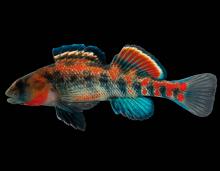
Species Types
Scientific Name
Etheostoma, Percina, Ammocrypta, and Crystallaria spp.
Description
Darters have been described as the hummingbirds of the fish world: colorful, small, and quick. Missouri has about 44 different types of darters. They are most diverse in the fast, clear, rocky streams of the Ozarks.
Media

Species Types
Scientific Name
Etheostoma spectabile
Description
Orangethroat darters are one of the most common darters in the Ozarks. The males are colorful during breeding season, with red blotches on the sides and bright orange under the gills.
Media
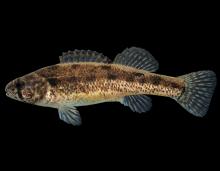
Species Types
Scientific Name
Etheostoma cragini
Description
The Arkansas darter is a small, rare perch that lives in shallow, spring branches and spring-fed creeks with sandy bottoms and mats of watercress.
Media
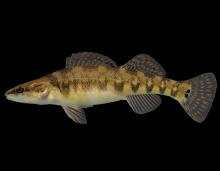
Species Types
Scientific Name
Etheostoma nianguae
Description
Two small black spots at the base of the tail fin distinguish the Niangua darter from all other darters in Missouri. Known from only a few tributaries of the Osage River, this dainty, colorful fish is a nationally threatened species.
Media
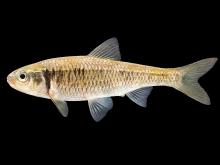
Species Types
Scientific Name
Luxilus cornutus
Description
The common shiner is mostly found in central and west-central Missouri in short, direct tributaries of the Missouri River. It is very similar to the striped shiner but lacks dusty sprinkles of pigment on its chin and (except for breeding males) lacks dark lines on the upper part of the body.
Media
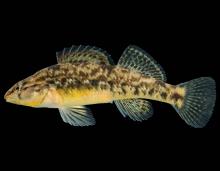
Species Types
Scientific Name
Etheostoma caeruleum
Description
The rainbow darter is a common and characteristic darter in the Ozarks. Where it occurs in our state, it is the most abundant darter in most streams of all sizes. Breeding males are brilliantly colored with reddish orange red and greenish blue.
Media
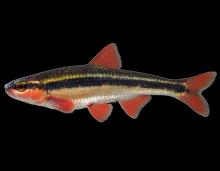
Species Types
Scientific Name
Luxilus pilsbryi
Description
In our state, the duskystripe shiner is only found in the White River system of southwest and south-central Missouri. It prefers swift, clear headwater streams. The dark stripe along the side extends from nose to tail with a lighter-colored band above it.
Media

Species Types
Scientific Name
Dorosoma petenense
Description
The threadfin shad occurs in the Mississippi River and its tributaries. It also occurs in mainstem reservoirs of the White River Basin and in Montrose Lake and the South Grand River in Henry County.
Media

Species Types
Scientific Name
Alosa chrysochloris
Description
The skipjack herring is an active fish, moving about continuously in large schools. It probably occurs at least occasionally in most of the large rivers of the state where its migrations are not blocked by dams.
Media

Species Types
Scientific Name
Alosa alabamae
Description
The Alabama shad is uncommon in Missouri. It spends most of its adult life in the sea and enters freshwater streams to spawn. Missouri may have the last spawning populations that occur in the Mississippi River system.
See Also


Media

Species Types
Scientific Name
Amphiuma tridactylum
Description
The three-toed amphiuma is an eel-like, completely aquatic salamander. It has very small forelimbs and hind limbs, each with three tiny toes. In Missouri it’s found only in the Bootheel region.
Media

Species Types
Scientific Name
Siren intermedia nettingi
Description
The western lesser siren is an eel-like, aquatic salamander with external gills, small eyes, small forelimbs with four toes, and no hind limbs. In Missouri, it’s found mostly in the Bootheel and northward in counties near the Mississippi River.
About Fishes in Missouri
Missouri has more than 200 kinds of fish, more than are found in most neighboring states. Fishes live in water, breathe with gills, and have fins instead of legs. Most are covered with scales. Most fish in Missouri “look” like fish and could never be confused with anything else. True, lampreys and eels have snakelike bodies — but they also have fins and smooth, slimy skin, which snakes do not.





















